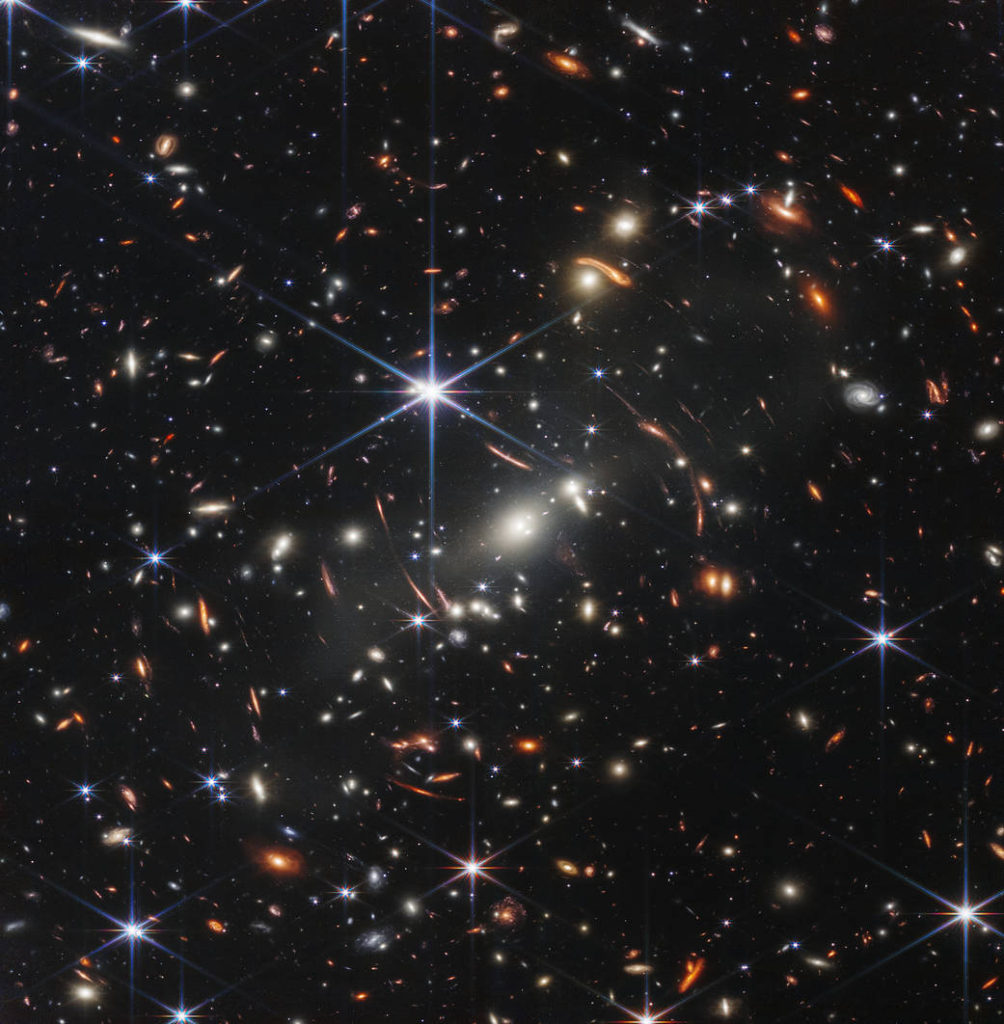SMACS 0723
I remember first using Kodachrome film. To hold a color print was a delight, an image that represented with remarkable fidelity the mental image achieved by the eye and the mind. Up until I owned the Agfa 35mm camera which took the Kodak color film, I was accustomed to a box camera, which I loaded with black and white film. I enjoyed the 8×10 prints achieved from the black and white negatives. Yet, what was revealed by color was in a class by itself.
This image is in a class by itself. I learned of the image coming from the NASA’s Webb telescope on yesterday’s evening news. The “subdivision” of the universe captured in this photo is SMACS 0723. According to the NASA website:
Known as Webb’s First Deep Field, this image of galaxy cluster SMACS 0723 is overflowing with detail. This slice of the vast universe covers a patch of sky approximately the size of a grain of sand held at arm’s length by someone on the ground.
This deep field, taken by Webb’s Near-Infrared Camera (NIRCam), is a composite made from images at different wavelengths, totaling 12.5 hours – achieving depths at infrared wavelengths beyond the Hubble Space Telescope’s deepest fields, which took weeks.
The image shows the galaxy cluster SMACS 0723 as it appeared 4.6 billion years ago.
If this image and description does not cause you to reel with vertigo, read the last sentence once again. Creatures such as you and I, Homo sapiens were not yet around at the beginning. Humans, early Homo sapiens arrived in Africa some 300,000 years ago, where we hunted and gathered food. That was just yesterday. And here you and I are, peering at this photograph.
To learn more, please visit the NASA website: CLICK HERE.
